Hours: Thurs-Mon, noon-6 pm
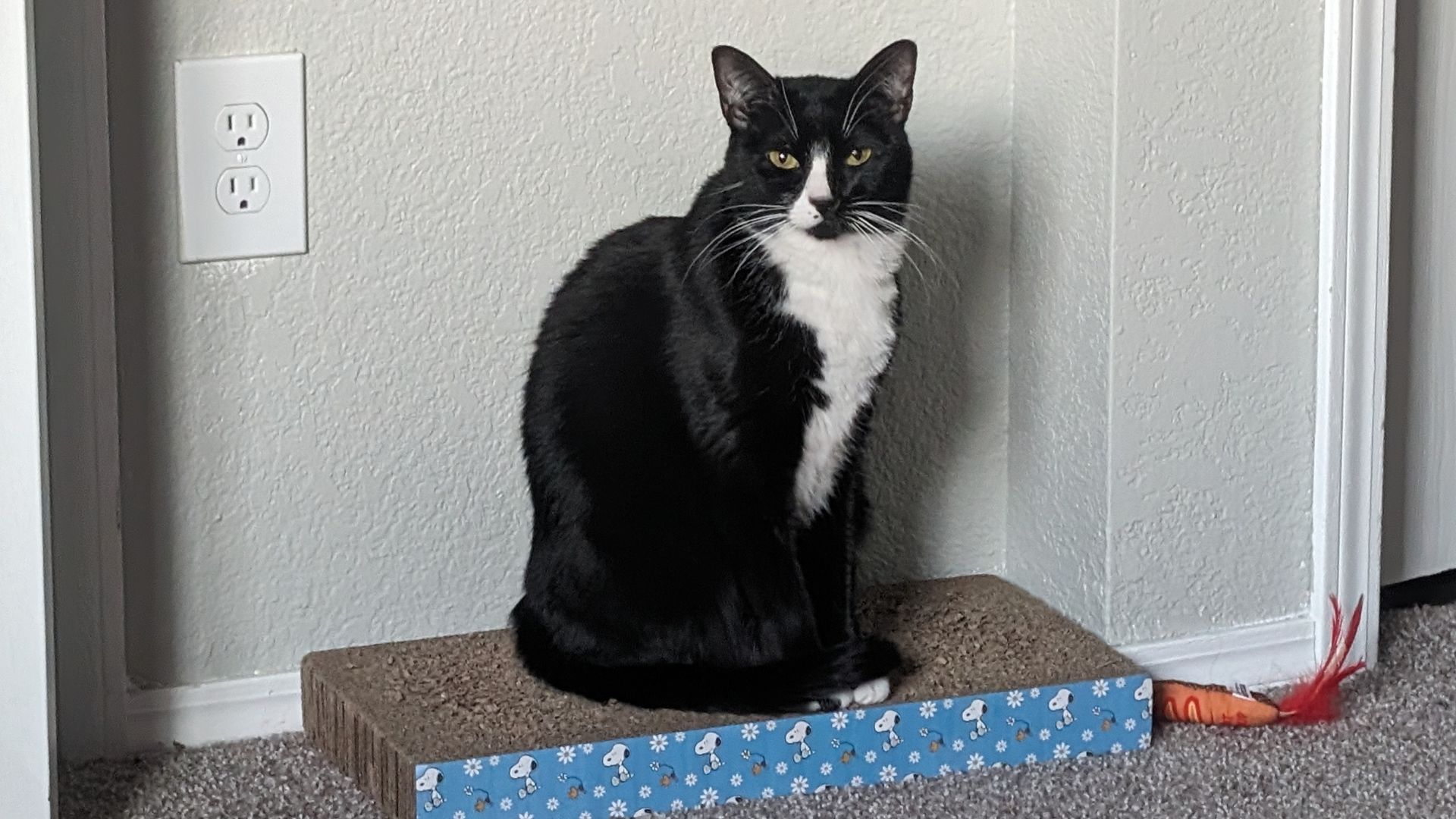
At Cat Care Society, we know that caring for cats is a team effort—and one of the most important parts of that team is our foster network. While our shelter provides safe, dependable housing and veterinary care for hundreds of cats each year, foster homes offer something we can’t always replicate within our walls: a quiet, individualized space where certain cats can truly thrive.
Foster homes complement the work shelters do. They enable us to have a flexible and responsive system that helps more cats heal and grow, and they allow us to stretch our resources further, provide individualized support to vulnerable cats, and ultimately increase each cat’s chances of getting adopted.
Below are just a few of the ways that foster homes support shelters and countless cats, both directly and indirectly!
Shelters provide a lifesaving refuge for cats, offering medical care, nutrition, protection, and enrichment. But for certain cats, especially those with special needs, a home environment can offer extra support that helps them recover, adjust, or grow in ways that a busy shelter environment might not allow.
Foster care can be beneficial for:
These cats benefit from one-on-one attention and a stable environment where they can relax and show their true personalities.
Foster care expands a shelter’s capacity. Every cat that goes into a foster home opens up space in the shelter for another animal in need. This is a critical part of how shelters operate, especially during busy seasons when intake numbers rise.
Fosters also allow shelters to:
Foster care is not a separate system—it’s part of CCS’ toolkit, allowing us to stretch our impact and offer flexible, creative solutions when cats need them most.
Cats in foster care often show their true personalities more readily than they might in a shelter. This helps CCS provide more information to potential adopters get a clearer sense of whether a cat is the right fit for their home.
Foster homes play a critical role in:
The result? Cats who are more confident, better understood, and great candidates for adoption!
Strawberry (shown at the top of this post) came to CCS as an extremely fearful cat who demonstrated this fear with aggression. We’re talking about spitting, hissing, growling, and lunging at CCS staff, completely unprovoked. A medical workup ruled out any underlying medical conditions that could be contributing to the behavior. Strawberry was a great candidate for a quiet foster home where she could have space, get comfortable, and work on socialization at her own pace.
In just over a week, a report from the foster stated that Strawberry had become a lap cat, was accepting and demanding pets, and had begun giving “head boops” or bunting, which is one way cats show affection. The foster was also able to quickly pick up on Strawberry’s motivations, favorite toys, and preferred ways to receive pets which accelerated Strawberry’s comfort level and ability to socialize. With patience and gentle care, Strawberry came out of her shell and built a lot of confidence.
After just under two months in the foster home, Strawberry came back to the shelter and was adopted a short time later!
At Cat Care Society, we’re proud to offer a safe, well-equipped shelter environment for our cats. But we also recognize that cats, like people, have individual needs. Foster homes allow us to meet those needs with compassion and flexibility.
Foster homes don’t replace shelters—they enhance them. Together, we’re able to give each cat the kind of care that works best for them. Whether it’s a cat recovering from surgery, a shy kitten learning to trust, or a beloved pet temporarily staying with us while their owner gets back on their feet—foster care gives us options. And options save lives and produce the best possible outcomes.
We’re incredibly grateful for our foster caregivers and the role they play in this mission. Because of them—and in partnership with our shelter—we’re able to do more, reach farther, and help every cat get one step closer to home.
Foster homes are the quiet heroes of the cat rescue world. They don’t just provide temporary shelter—they provide special cats opportunities to heal, grow, and shine. Their impact can’t be overstated: they help shelters run more effectively, improve outcomes for individual cats, and create a more compassionate, responsive animal welfare system.
At Cat Care Society, we are deeply grateful for every person who opens their home to a cat in need. If you’re interested in becoming a foster, please apply! We’re especially looking for fosters willing to take in cats with medical needs, those needing behavioral support, mother cats with litters, and young kittens. CCS provides all necessary training and support, including costs for your foster cat’s needs from food to medical care.
About the Author: Beth Dokolasa is a volunteer for Cat Care Society and serves on the Board of Directors. She is an instructional developer for Natural Grocers and lives in Indian Hills, Colo., with her husband, daughter, and two cats, Techno and Digit.
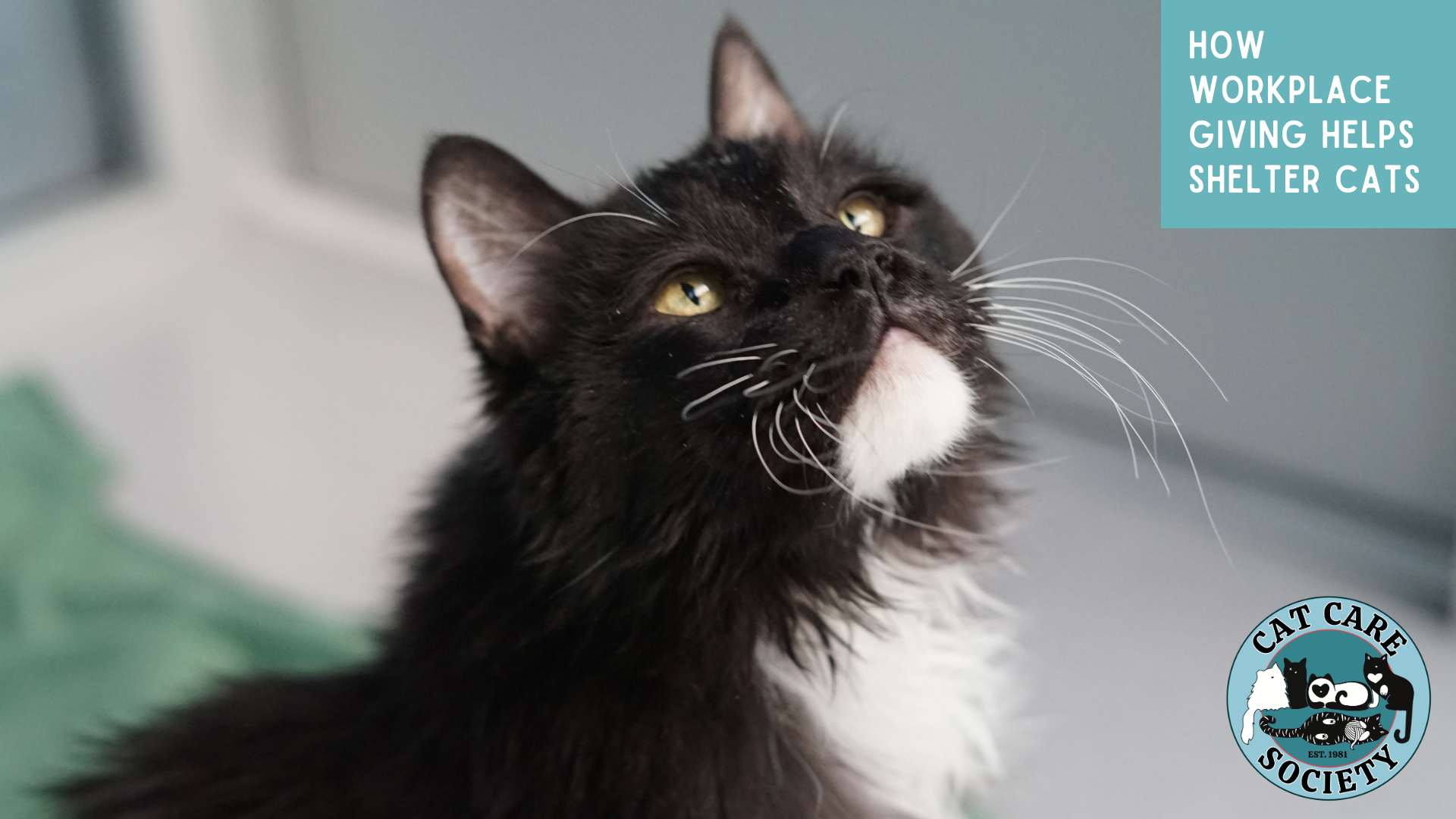

An easy and unique way to ring in your birthday and help shelter cats is by hosting a fundraiser on Facebook.
If your profile lists your birthday, Facebook will probably prompt you as it approaches to set up a fundraiser. You get to choose which cause or non-profit organization you want to support. When you select Cat Care Society, Facebook will automatically create a post for your friends to donate to. We recommend tailoring the automatic post language to something more personal that shares why you chose us and your connection to the society. It’s your day, and you get to boast about why you love cats so much! Then, select how long you’d like the fundraiser to run and your donation goal, and you’re off to the races. Your connections will be able to donate directly through Facebook, with no additional processing fees. At the end, we get a nice deposit in our bank account thanks to you!
The best part is it takes so little time to put together that you can set up your fundraiser and still have time leftover to plan that sweet birthday bash at the roller rink (or the party place of your choosing).
(Need help or have more questions? Visit this Facebook help center article.)
Once your fundraiser is live, Facebook will notify us, but we’d love if you reached out and told us about it, too! Email our director of philanthropy at aleader@catcaresociety.org so we can watch your party in action.
“As my birthday was approaching this year, I decided to host a fundraiser for a cause close to my heart,” Brenda Johnson, a Cat Care Society donor and volunteer who recently hosted her own fundraiser, said. “Since I volunteer with Cat Care Society, the decision was easy. I knew that this way, my friends could donate funds to a great organization I love that helps support cats in need. Creating the fundraiser was super easy and made me feel good. I set a goal of $200, and was able to successfully raise $170 from multiple friends who donated directly through Facebook. Now, I can rest easy that Cat Care Society gets a check and knowing that the process was easy and accessible for everyone.”
Not on Facebook? No problem! There are so many other ways you can help the cats. Consider hosting a supply drive, sending financial or physical donations or spending part of your day giving scritches to the kitties.
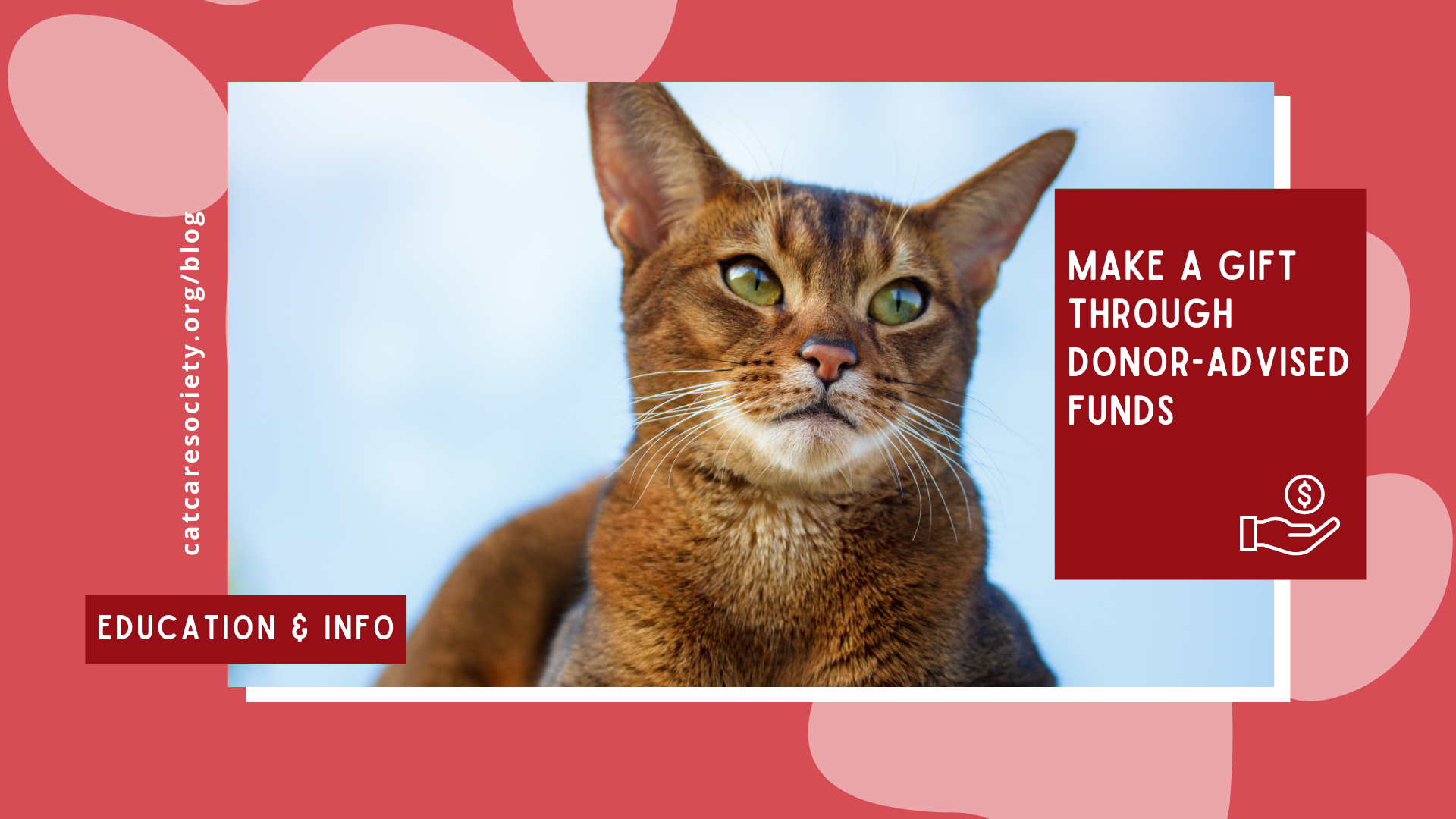
By Michaela Sullivan, CCS board member
I’ve been a huge fan of the Cat Care Society ever since I visited for the first time almost a decade ago. CCS has been one of my favorite places to donate to. I don’t know of a single shelter that comes close to providing the level of comfort and care for homeless cats that CCS does.
I work in finance and am very passionate about tax planning because I know what a huge difference it can make for someone’s bottom line. I have found that my favorite way to donate to CCS is through my Donor-Advised Fund (DAF). But what is DAF, anyway?
A DAF is an investment account for charitable giving. I can donate cash, appreciated stock and even illiquid investments in some cases. I don’t have to pay taxes on the gains for anything I contribute and receive an immediate charitable deduction.
I can select how I want my DAF invested and make grants to charities any time (now or into the future). Being able to take control of when I get my deductions has been crucial to optimizing my tax situation while supporting the organizations I care about the most. With the standard deduction now being so large, many people are bundling multiple years of donations into their DAF in one year while switching off between itemizing and taking the standard deduction. This is extremely helpful from a tax standpoint because if they did smaller donations each year instead, they may not even be getting a tax benefit at all.
I recently had a client sell their business, which resulted in millions of dollars in capital gains. They were able to make a substantial contribution to their DAF (estimating it would be enough to fund their donations for the next 10-15 years) and they were able to cut their tax bill by about $40k. Not only that, but they donated appreciated stock with over a 2,000% gain that they did not have to pay taxes on.
A donor advised fund can certainly be a great tool for tax planning, but that isn’t the only thing I love about it. It is also extremely easy to give and track because the financial institution holding the DAF does all the administration. When I want to donate, I can do it in a matter of minutes by logging into my account and searching for the organization I want to donate to. The organization will receive a check and a letter from my DAF. I can customize the letter by adding a note for where I want the funds allocated. The financial institution tracks everything for me. I can see information about my DAF contributions as well as my grants to charities and even when the checks were cashed.
I am so happy I have such an easy and tax-efficient way to give to my favorite cause, CATS!
Interested in expanding your philanthropic giving by setting up your own DAF? Contact our director of philanthropy at aleader@catcaresociety.org for help or connect with your financial institution or tax advisor! And, find more ways to give on our website.
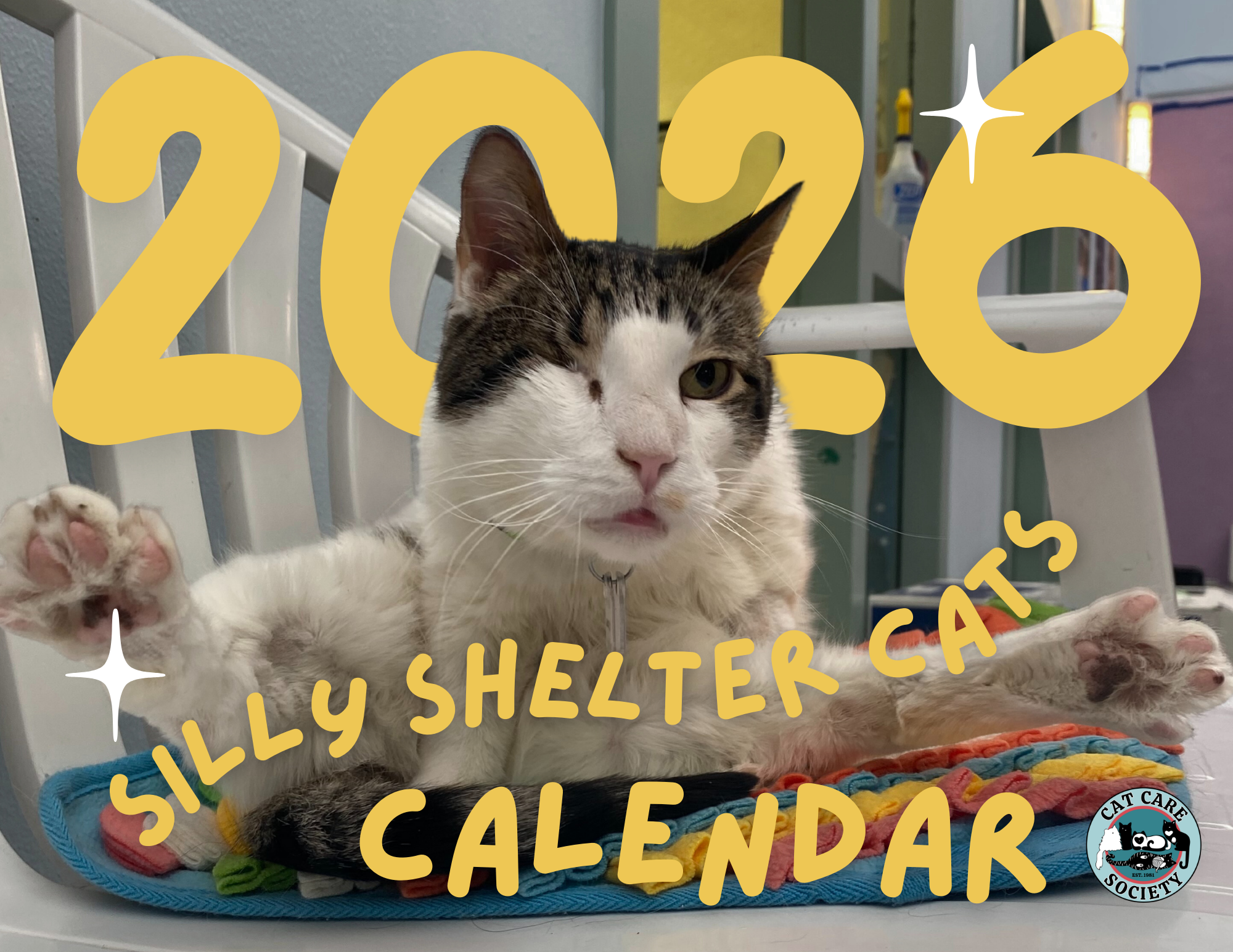
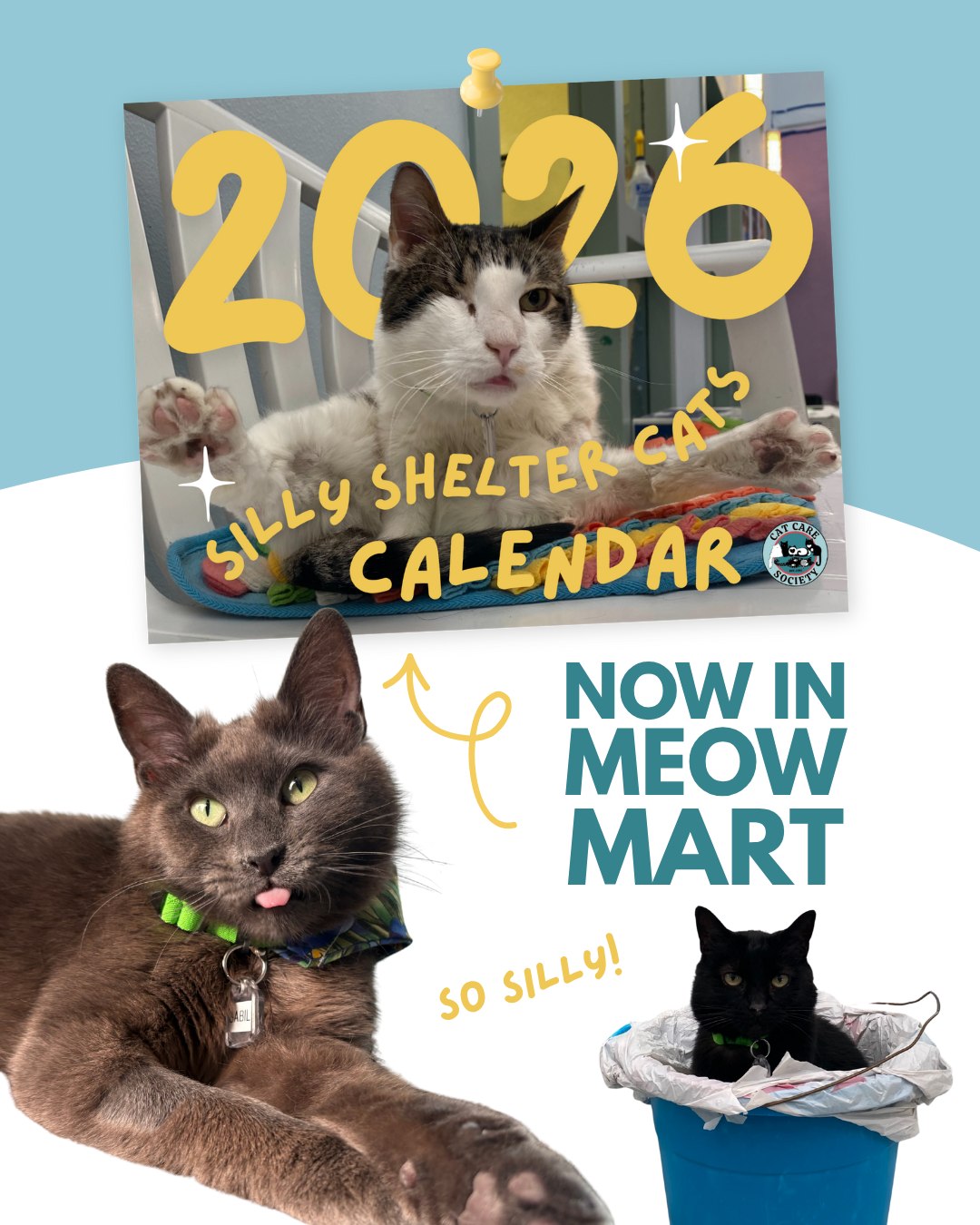
The 2026 Cat Care Society calendar is now available for sale online or in our Meow Mart store in the shelter!
Grab your “Silly Shelter Cats” calendar today featuring silly pictures from our adoptable cats, plus photo updates from some of our amazing alumni!
Shipping is available to all U.S. states for just $5.

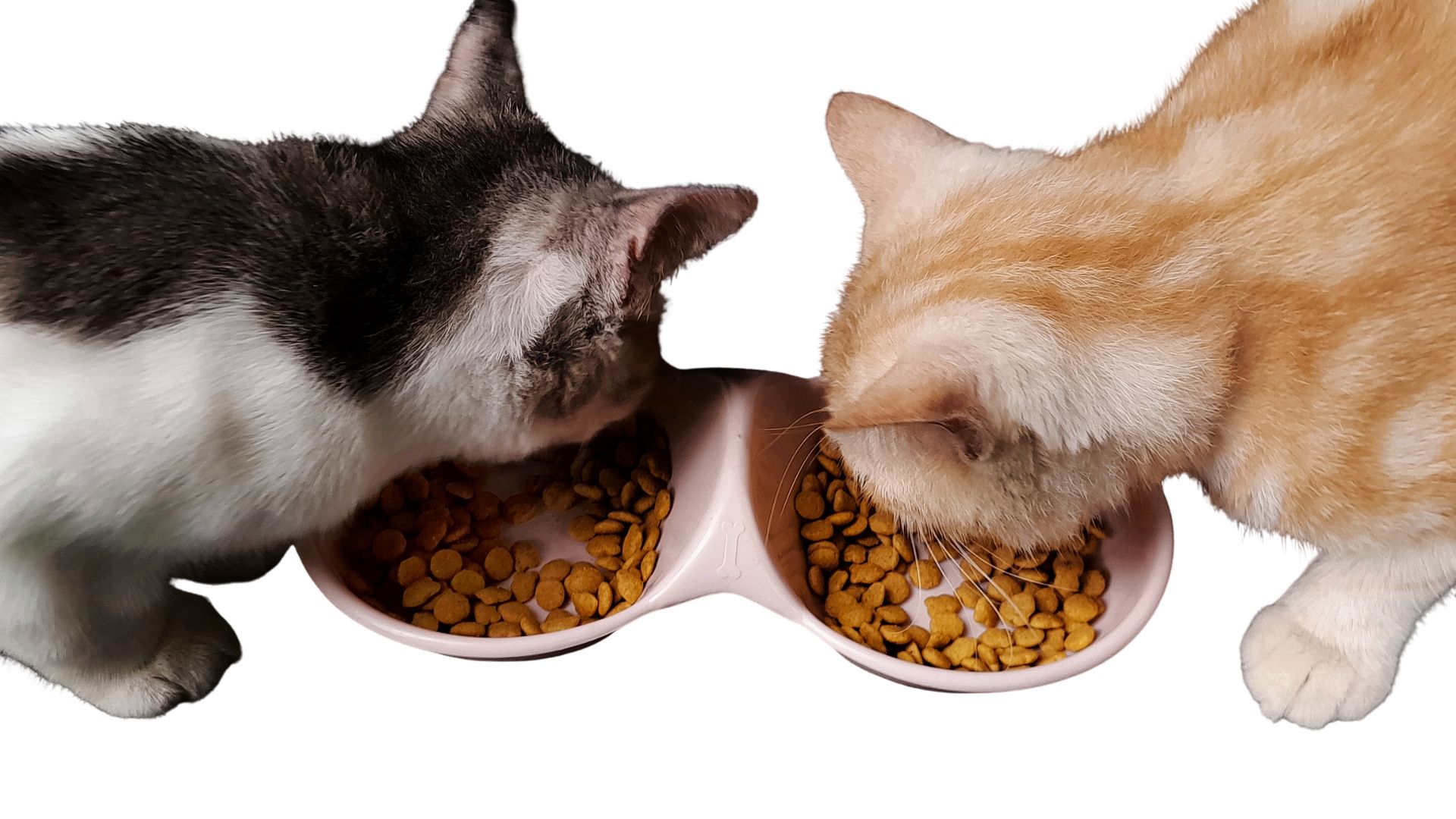
There are more cat food options than ever before, which is great for picky eaters and for cats with special dietary needs, but for a cat owner, navigating the cat food aisle can feel overwhelming. The good news is that with so many options available, even if you’re on a budget, you can still provide your cat with healthy and tasty food. In this article, we will discuss what to look for on the label, pros and cons of various cat food forms, and much more!
The best way to begin filtering through all the cat food options is by knowing what to avoid and what to look for on the product’s label.
What to Avoid:
Food Fact: Terms like “premium,” “gourmet,” “holistic,” “no fillers,” and “human-grade” aren’t legally regulated and don’t guarantee higher-quality ingredients. While foods with these labels aren’t always bad choices, it’s important not to rely solely on these words when choosing a cat food, as they have no official definitions or standards.
What to Look For:
If you’re still having trouble making a decision, you can always ask your veterinarian for suggestions. If your cat needs a specific prescription diet, always follow your veterinarian’s guidance. Also, if you’re adopting a cat, ask the shelter what food the cat has been eating and what they’d recommend. At Cat Care Society, we’re a big fan of Hill’s!
Food Fact: The terms “complete” and “balanced” are defined by AAFCO and are regulated by the Food and Drug Administration (FDA). You can feel confident that when you see “complete” on a cat food, it contains all the required nutrients for a cat. “Balanced” means it contains all the nutrients and they are in the ideal proportions.
Below are the most common forms of cat food. There’s no single perfect choice for every cat, so you may need to experiment to find what best suits your cat’s tastes and your lifestyle.
Dry Kibble: Shelf-stable, cost-effective, and convenient to measure and store, dry kibble is often a significant part of a cat’s diet. There are many options available—from formulas with specific textures to help reduce plaque and tartar, to those fortified with vitamins, minerals, and other specialty ingredients aimed at specific health goals.
Canned/wet food: Containing 70–80% moisture, canned/wet food can support kidney and urinary tract health, especially in cats that don’t drink much water. Wet food is usually very popular with cats, and sometimes essential for cats with dental issues. Some kitties may have a preference between pâté, chunks in gravy, flakes, shredded, etc., so try single cans first before buying in bulk!
Fresh/refrigerated food: This option involves fresh, but cooked, foods that are often steamed to preserve nutrients while reducing harmful pathogens. Safe food handling is still essential to ensure the food remains safe to eat throughout storage and consumption, and be sure to look for complete and balanced options.
Raw/freeze-dried raw food: The goal of commercial raw/freeze-dried raw food is to provide high-quality protein and mimic a cat’s natural prey-based diet. However, most raw cat food products are not complete and balanced, and they also carry a much greater risk of foodborne illness in your pet and in the people living in the household. Additionally, it is not recommended to feed your cat raw meat purchased at a traditional grocery store as it carries a greater risk of illness due to harmful bacteria like Salmonella and E. coli. In recent years, feeding cats raw and freeze-dried cat food has also come with an increased risk of bird flu transmission. The Food and Drug Administration (FDA) has some great research and guidance on raw pet food diets.
Many cats enjoy a combination of foods. This could look like mixing dry food in with a wet pâté at meal time or serving them separately, such as wet food in the morning and dry kibble for their evening meal. The most important thing is to choose foods with a nutritional adequacy statement on the label, which confirms they are complete and balanced and meet AAFCO nutrition standards.
One thing is for sure: cats need meat. Cats are obligate carnivores, which means they need to eat meat to stay healthy. In general, cats do best eating a diet with high amounts of protein, moderate amounts of fat, and minimal amounts of carbohydrates. Check out our blog post that goes into more detail on why cats need to eat meat to learn more!
Food Fact: Each cat is unique, and their dietary needs are unique, as well. General recommendations given in our blog or on the food products you purchase may not be the best fit for your cat. We always recommend consulting your veterinarian when deciding on the best types and amount of food to feed your cat daily.
Whatever you call them, choosy cats can make it difficult to find that balance of nutritious, delicious, and budget-friendly. A good place to start is by switching up the consistency and texture, because a cat’s senses are especially sensitive to it. From having a jaw designed for shearing meat and crunching bones to having highly sensitive whiskers and lips, they notice the subtle differences in food shape, size, and feel. For example, certain cats may love shredded wet food in gravy but stick up their noses to chunks in gravy. Below are some ideas to satisfy your feline foodie.
When to Visit a Vet: If you notice a sudden change in your cat’s food preferences, it’s a good idea to visit your veterinarian to rule out any new health conditions or dental issues. Additionally, if you notice your cat excessively scratching, licking, or biting their skin, it may indicate that they have a food allergy.
By paying attention to the label and choosing foods that meet AAFCO standards for your cat’s life stage and health needs, you can ensure your cat gets the nutrition they need. Remember that different forms of cat food—dry kibble, wet/canned, raw/freeze-dried, or fresh/refrigerated—each have their benefits, and many cats thrive on a mix. For picky eaters, experimenting with texture, temperature, and food enhancers can make mealtime more enjoyable.
Donate you extra cat food to CCS! If you have leftover cat food that your cat doesn’t enjoy or food you simply no longer need, consider sharing it with other cats. CCS gladly accepts any non-refrigerated, unexpired cat food or treats—wet or dry, new or partially used (in their original packaging). Simply bring your donations during shelter hours and leave them in the designated donation area in the lobby.
About the Author: Beth Dokolasa is a volunteer for Cat Care Society and serves on the Board of Directors. She is an instructional developer for Natural Grocers and lives in Indian Hills, Colo., with her husband, daughter, and two cats, Techno and Digit.

When Sunny came to Cat Care Society, she was heartbreakingly fragile. This petite brown tabby faced some of the toughest medical challenges we see in cats: advanced kidney disease, severe anemia, constant vomiting, and dangerous weight loss. Each day, her future seemed uncertain.
But even when she was weak, she never stopped showing us her sunny disposition. She purred through exams and headbutted our staff’s hands as if to say, “Don’t give up on me.”
And we didn’t.
Sunny quickly became a staff favorite at Cat Care Society. That’s why we gave her a special distinction: the “Lonely Hearts Club.” This group is reserved for cats who need a little extra help to find their perfect match — older cats, those with longer stays, or cats facing complex medical needs. Sunny ticked every one of these boxes, but we knew she deserved the chance to find a home where she could feel safe and loved.
To continue receiving the daily medications, fluids, lab work, and constant care that keep cats like Sunny alive, we rely on support from donors like you. Every lab test, every dose of medicine, every gentle pat from our veterinary team is only possible because someone chose to give.
Most importantly, generosity from donors like you gave her the greatest gift of all: time. Time to grow stronger, stabilize, and wait for someone who would open their heart to a 14-year-old cat with lifelong medical needs and costly care.
After five months of care in the shelter, Sunny met her perfect match. A local veterinarian met Sunny and instantly knew they were meant to be together. Able to provide the ongoing medical attention Sunny so desperately needed, she was able to give Sunny a loving and restorative home to live out her golden years.
“Sunny (now called Cardi) is doing great! She is a very sweet girl, loves pets and cuddles, and has adjusted well. Her kidney disease is also doing well, her anemia is holding steady, and her weight has continued to go up. I love senior kitties and helping them feel the best they can by managing any medical issues.” – Dr. Hale, Sunny’s adopter

At Cat Care Society, every cat’s care is guided by a compassionate and expert approach — combining veterinary protocols, staff training, donor-funded medical treatments, and specialized initiatives like the Lonely Hearts Club. Sunny’s recovery was not a one-time miracle, but the result of this proven approach designed to identify, treat, and advocate for our most vulnerable feline friends.
Today, Sunny is no longer a lonely heart. She is safe, cherished, and adored — thanks to supporters like you.
But while Sunny’s story has a happy ending, many other Lonely Hearts are still waiting at Cat Care Society. Senior cats. Cats with medical challenges. Cats who have been overlooked time and again. They are counting on us, and on you, to give them love, care, and a second chance at life.
Will you open your heart today to help the next lonely heart find their loving home? Your gift provides the medications, veterinary care, and loving support that make happy endings like Sunny’s possible.
With gratitude,
– EC Michaels
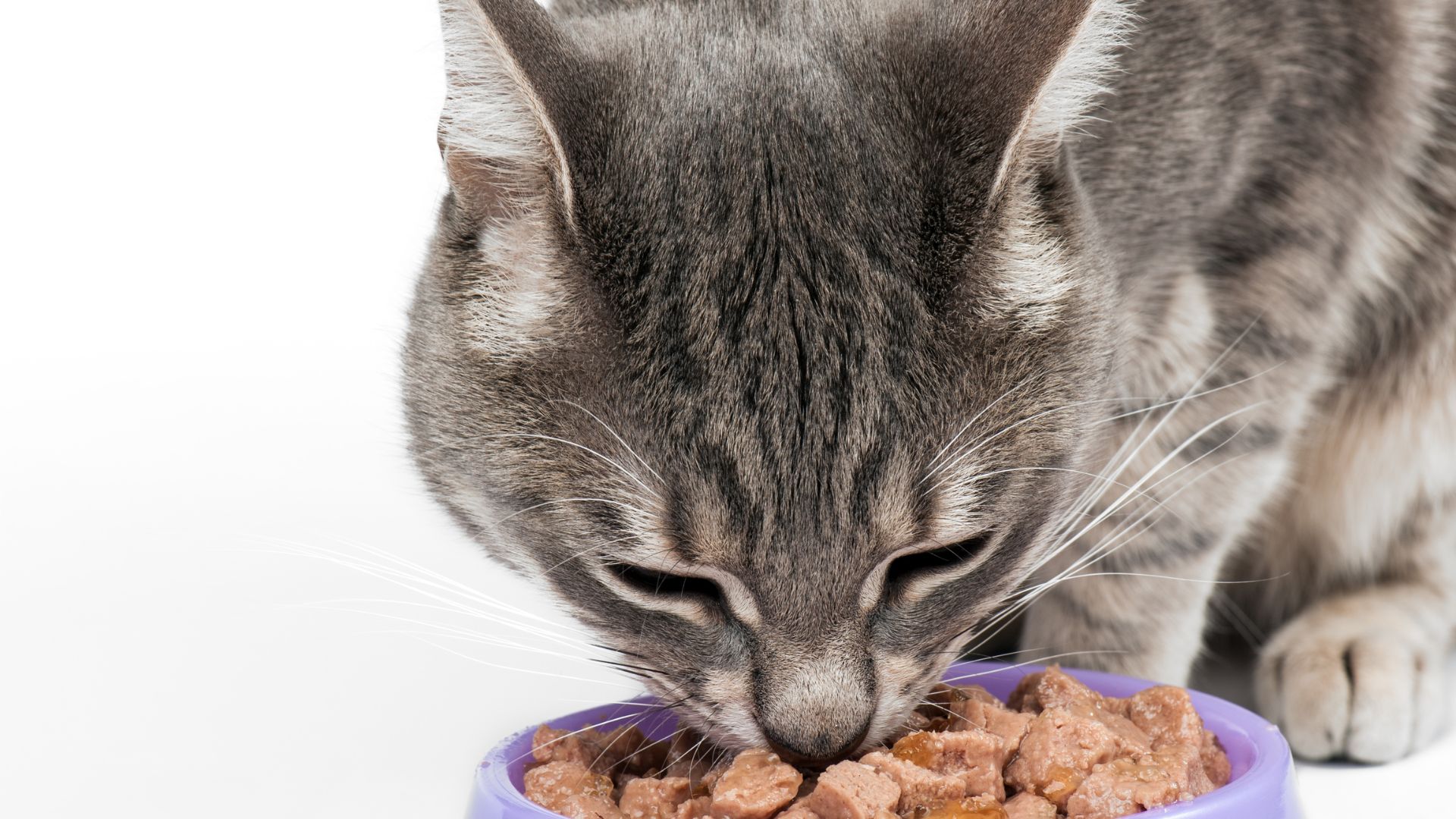
Cats are often known for being picky eaters—whether it’s an aversion to certain kibble shapes, a preference for pâté over chunks in gravy, or a liking for food served slightly warmed. For cat owners, finding a food that their cat enjoys while still meeting nutrition needs can be a real challenge. However, one thing remains certain: cats are obligate carnivores and need to eat meat.
An obligate carnivore is an animal that must eat meat to survive because its body is biologically adapted to derive essential nutrients solely from animal-based sources. Cats evolved as hunters that consume prey containing high amounts of protein, moderate amounts of fat, and minimal amounts of carbohydrates, and they still typically do best consuming those proportions today. Just like humans, cats also require certain amounts of micronutrients, like vitamins, minerals, and amino acids to thrive.
Cats require many kinds of micronutrients from a variety of sources. Below are some of the key nutrients that are either exclusively found in meat or for which meat is the best source.
Without adequate intake of these vital nutrients, cats can experience deficiency symptoms and even irreversible damage to their health, so it’s important to provide them with a complete and balanced diet that reflects their biological need for meat-based nutrition.
Food Allergy Note: Even though cats need meat, they can still develop allergies to certain kinds of meat. The most common meat allergens for cats are beef, chicken, and fish. If you regularly feed these to your cat and notice them scratching, licking, or chewing themselves more than usual, they may have a meat allergy. Your cat’s veterinarian may recommend an elimination diet trial where you avoid the foods they regularly eat for a designated time to see if the symptoms improve. Alternative meat protein like rabbit, duck, and venison are often good options for cats with known meat allergies.
If you’re starting to think this is all leading to a time-consuming recommendation for homemade, all-meat meals—don’t worry. Regardless of quality, feeding your cat only prepared muscle meat (such as chicken breast or ground turkey) can actually lead to essential nutrient deficiencies! Cats need a variety of nutrients found in organ meat and animal fat, too. For balanced and complete nutrition, cats typically do best consuming commercially balanced raw and cooked food.
Look for products that contain a nutritional adequacy statement on the label. This indicates that the food meets the nutritional standards set by the Association of American Feed Control Officials (AAFCO), a nonprofit that establishes nutritional standards for pet foods. Cat Care Society is a proud partner of Hill’s Food, Shelter & Love program, and we feed Hill’s to our shelter cats. Hill’s recipes meet AAFCO nutrition standards, so our cats get the complete and balanced nutrition they need. (Note: AAFCO does not directly test or certify pet foods. Pet food companies use third-party testing agencies to analyze their foods according to AAFCO guidelines.)
Supplemental homemade meals can often be included as a part of your cat’s healthy diet, provided that it’s approved by the cat’s veterinarian, safely prepared, and does not include any ingredients harmful to cats, such as garlic, onions, raw eggs, and excess sodium. Additionally, do not feed your cat raw meat. While cats eat raw meat in the wild, feeding them raw meat purchased at a traditional grocery store can cause illness due to harmful bacteria like Salmonella and E. coli.
Understanding your cat’s biological need for meat is essential to supporting their lifelong health and well-being. As obligate carnivores, cats rely on meat not just for protein, but for critical nutrients like taurine, arachidonic acid, and essential vitamins that they cannot make on their own. By choosing high-quality commercial foods that meet AAFCO standards and consulting with your veterinarian, you can feel confident that you’re giving your cat the nourishment they need to thrive.
About the Author: Beth Dokolasa is a volunteer for Cat Care Society and serves on the Board of Directors. She is an instructional developer for Natural Grocers and lives in Indian Hills, Colo., with her husband, daughter, and two cats, Techno and Digit.
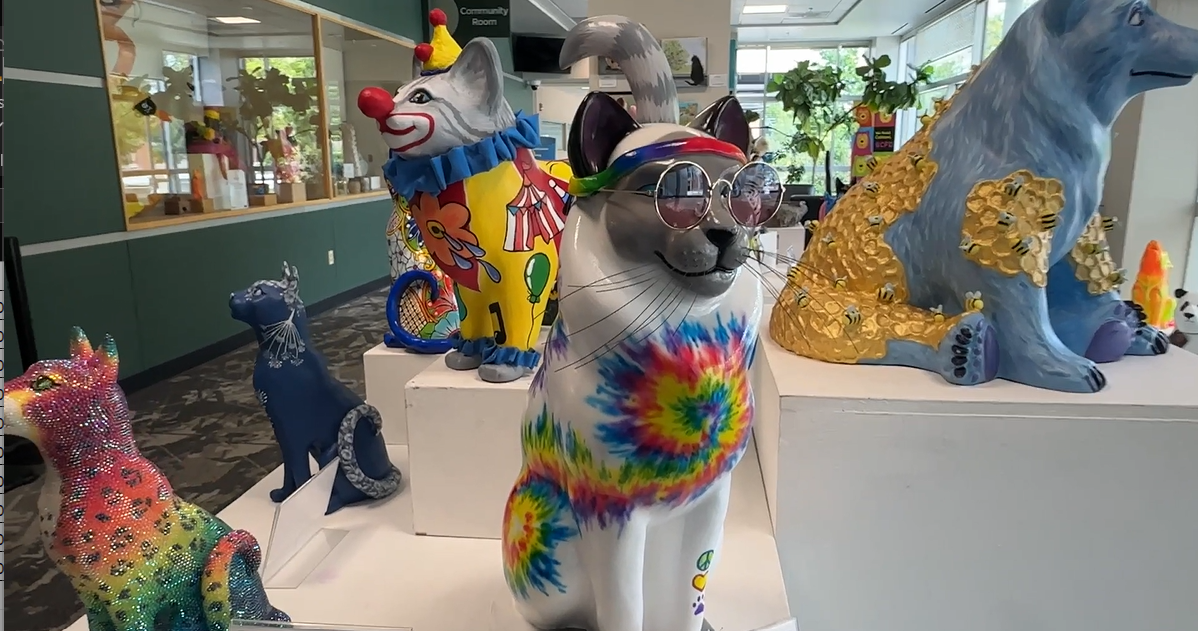
Cat Care Society is proud to announce 29 local artists selected for the 2025 “Tails of the Painted Cats” (TOPC) exhibition. These Colorado creatives have each transformed fiberglass animal sculptures into stunning, one-of-a-kind works of art, now on public display and set to be auctioned this fall to benefit the shelter’s life-saving programs.
Now in its tenth year, Tails of the Painted Cats has become CCS’s signature fundraiser and a beloved event in the Denver arts community. The event brings together artists, animal lovers, and supporters to celebrate compassion through creativity.
“What began as a small, unique fundraiser has grown into a cherished tradition,” said Cat Care Society Executive Director EC Michaels. “As our largest fundraising event, every ticket, bid, and vote truly makes a difference, supporting critical medical care, enrichment, and safe housing for the more than 1,000 cats who come through our shelter each year.”
Seventy-five artists applied for this year’s collection, of which 29 were selected to create animal sculptures. The sculptures are currently on tour.
This year’s exhibition includes:
|
|
“It’s been an incredible joy to watch this event grow over the years,” said Jane Dorsey, Cat Care Society’s longtime Art Director. “This year’s collection is one of our best yet—full of creativity, love, and spirit.”
Tara Deenihan, Art Coordinator and incoming lead for the program, added: “The artists participating this year have truly blown our minds! We have several new artists and many returning artists, and seeing their ideas come to fruition has been really exciting. The cats are all so different and beautifully realized – I love seeing what cats can inspire.”
The public is invited to view the sculptures in person or online and vote for their favorite in the People’s Choice Award. The winner will be announced at the TOPC gala on October 18, and the artist will receive a cash prize.
This year’s TOPC gala will take place Saturday, October 18, 2025 at Pinehurst Country Club and will be masquerade themed. 9News Reporter, Steve Staeger returns as this year’s emcee. Tickets will go on sale in mid-June.
Learn more about Tails of the Painted Cats at catcaresociety.org/topc/

At Cat Care Society, we know that caring for cats is a team effort—and one of the most important parts of that team is our foster network. While our shelter provides safe, dependable housing and veterinary care for hundreds of cats each year, foster homes offer something we can’t always replicate within our walls: a quiet, individualized space where certain cats can truly thrive.
Foster homes complement the work shelters do. They enable us to have a flexible and responsive system that helps more cats heal and grow, and they allow us to stretch our resources further, provide individualized support to vulnerable cats, and ultimately increase each cat’s chances of getting adopted.
Below are just a few of the ways that foster homes support shelters and countless cats, both directly and indirectly!
Shelters provide a lifesaving refuge for cats, offering medical care, nutrition, protection, and enrichment. But for certain cats, especially those with special needs, a home environment can offer extra support that helps them recover, adjust, or grow in ways that a busy shelter environment might not allow.
Foster care can be beneficial for:
These cats benefit from one-on-one attention and a stable environment where they can relax and show their true personalities.
Foster care expands a shelter’s capacity. Every cat that goes into a foster home opens up space in the shelter for another animal in need. This is a critical part of how shelters operate, especially during busy seasons when intake numbers rise.
Fosters also allow shelters to:
Foster care is not a separate system—it’s part of CCS’ toolkit, allowing us to stretch our impact and offer flexible, creative solutions when cats need them most.
Cats in foster care often show their true personalities more readily than they might in a shelter. This helps CCS provide more information to potential adopters get a clearer sense of whether a cat is the right fit for their home.
Foster homes play a critical role in:
The result? Cats who are more confident, better understood, and great candidates for adoption!
Strawberry (shown at the top of this post) came to CCS as an extremely fearful cat who demonstrated this fear with aggression. We’re talking about spitting, hissing, growling, and lunging at CCS staff, completely unprovoked. A medical workup ruled out any underlying medical conditions that could be contributing to the behavior. Strawberry was a great candidate for a quiet foster home where she could have space, get comfortable, and work on socialization at her own pace.
In just over a week, a report from the foster stated that Strawberry had become a lap cat, was accepting and demanding pets, and had begun giving “head boops” or bunting, which is one way cats show affection. The foster was also able to quickly pick up on Strawberry’s motivations, favorite toys, and preferred ways to receive pets which accelerated Strawberry’s comfort level and ability to socialize. With patience and gentle care, Strawberry came out of her shell and built a lot of confidence.
After just under two months in the foster home, Strawberry came back to the shelter and was adopted a short time later!
At Cat Care Society, we’re proud to offer a safe, well-equipped shelter environment for our cats. But we also recognize that cats, like people, have individual needs. Foster homes allow us to meet those needs with compassion and flexibility.
Foster homes don’t replace shelters—they enhance them. Together, we’re able to give each cat the kind of care that works best for them. Whether it’s a cat recovering from surgery, a shy kitten learning to trust, or a beloved pet temporarily staying with us while their owner gets back on their feet—foster care gives us options. And options save lives and produce the best possible outcomes.
We’re incredibly grateful for our foster caregivers and the role they play in this mission. Because of them—and in partnership with our shelter—we’re able to do more, reach farther, and help every cat get one step closer to home.
Foster homes are the quiet heroes of the cat rescue world. They don’t just provide temporary shelter—they provide special cats opportunities to heal, grow, and shine. Their impact can’t be overstated: they help shelters run more effectively, improve outcomes for individual cats, and create a more compassionate, responsive animal welfare system.
At Cat Care Society, we are deeply grateful for every person who opens their home to a cat in need. If you’re interested in becoming a foster, please apply! We’re especially looking for fosters willing to take in cats with medical needs, those needing behavioral support, mother cats with litters, and young kittens. CCS provides all necessary training and support, including costs for your foster cat’s needs from food to medical care.
About the Author: Beth Dokolasa is a volunteer for Cat Care Society and serves on the Board of Directors. She is an instructional developer for Natural Grocers and lives in Indian Hills, Colo., with her husband, daughter, and two cats, Techno and Digit.
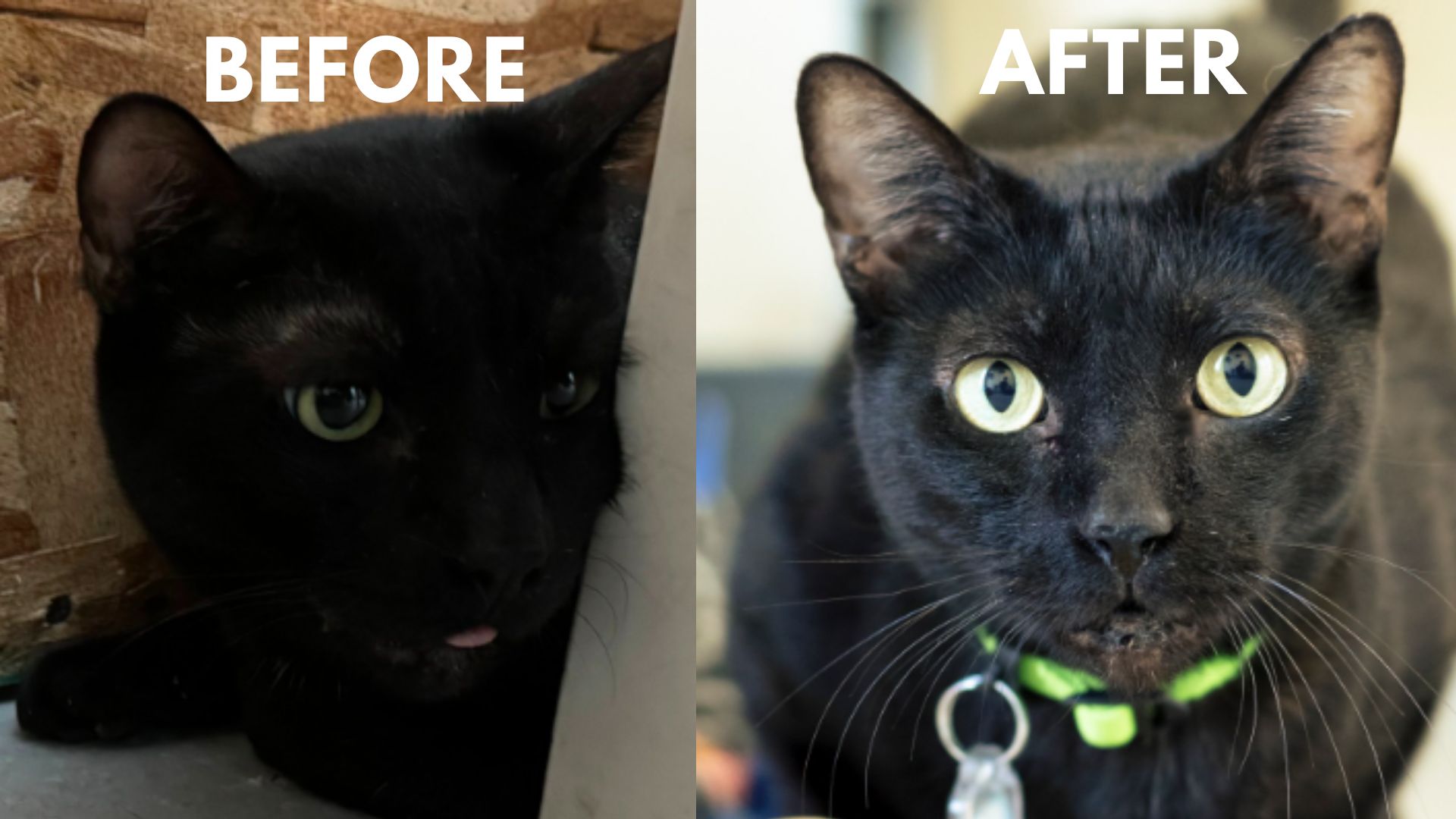
When I walk into Cat Care Society, or any shelter, with my camera, I don’t see homeless pets – I see stories waiting to be told.
I see cats with beautiful personalities just waiting to come out once they find the right person. Some are shy and mysterious, others sassy or playful, but they all have one thing in common: they deserve to find that Right Person. We live in a world where adoptions begin with a scroll on a screen, where the very first impression is what makes a connection, where love at first sight is very real.
That’s where photography comes in. They need not just any photo, but one that speaks err …MEOWS.
Online pet profiles are now often the first step to adoption. A great photo can stop someone mid-scroll, make a potential adopter feel something, and highlight a pet’s unique spirit with their eyes, their head tilt, and their expressive tail.
Think about it this way – would a blurry photo of a dark shadow stop your eyes from scrolling? Or would you instead pause on a well-lit portrait of a clear-eyed feline looking through the phone directly into your soul?
Images like these invite a second look. And that second look can turn into love.
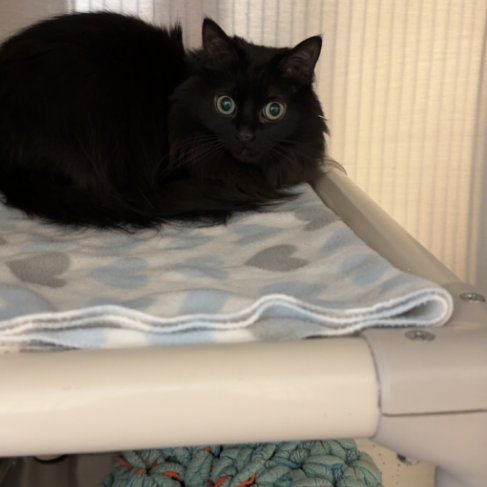
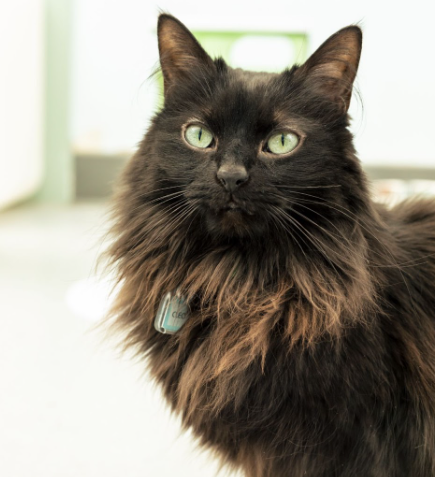
By the time I get to them, most of these cats have had enough days to settle into their new surroundings. Their original intake photo is usually taken just as they arrive. They’re not sure where they are or who these strange people are and it shows. After a few days, most have realized they’re safe. They’ve gotten some sleep, maybe some treatment, delicious food, they generally feel better, and that also shows.
Cleo, as you can see from the intake photo versus the portrait, was all about asking me for attention when I came in to photograph her. Her royal line was becoming obvious! And since then, she has been adopted into a loving family.
While I love volunteering my professional photography for Cat Care Society and others, I know many fosters are doing amazing work on their own — and you want your foster cats to stand out, too.
The next time you see an adoption profile, take a second to really see the cat. If you feel drawn in by the photo – even if just for a moment – know that was no accident.
It was love, caught in a frame.
Susie Inverso owns Crimson Cat Studios Pet Photography in Lakewood, CO. She specializes in capturing the true spirit of companion animals through compassionate, story-driven portraits. You can learn more about her at www.crimsoncatstudios.com
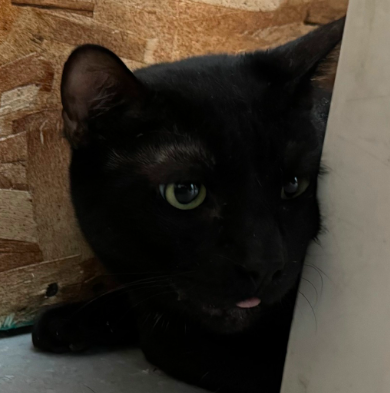
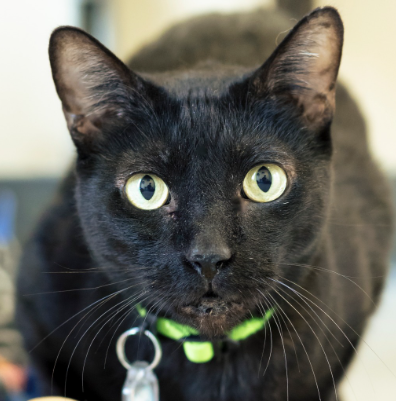
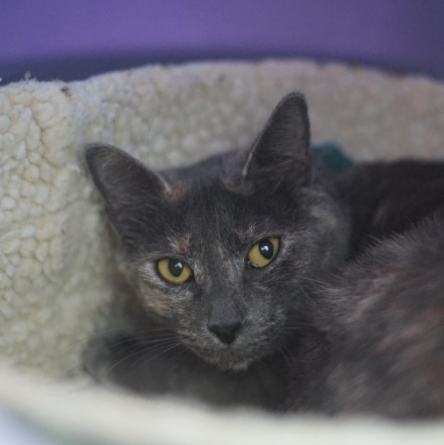
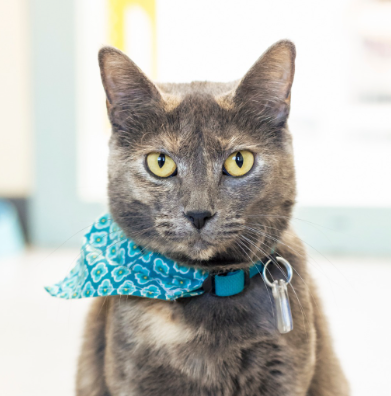
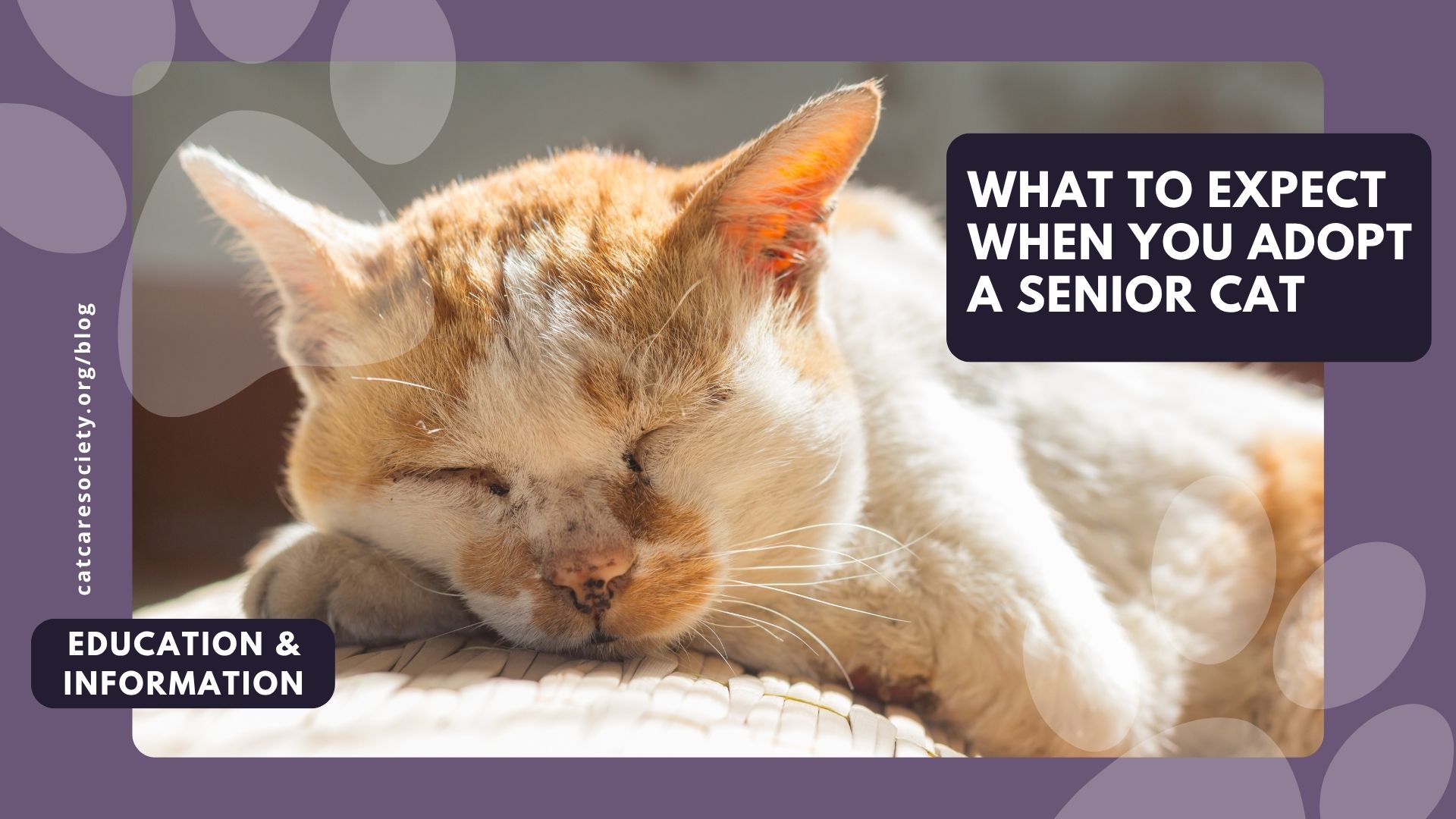
Cat Care Society believes that all cats are worthy, regardless of their age or abilities. Senior cats, in particular, hold an extra special place in our hearts—and it’s not just us! Time and again, we hear from adopters who submit successful adoption updates that feel the same way. Senior cats are sometimes overlooked in shelters, but those who choose to adopt them often say it’s extremely rewarding and they’re amazed at the quick and deep connections they make.
While every senior cat is unique and has their own personality, there are some common things you can expect and prepare for when you adopt a senior cat, which we’ll share later in this article.
Unlike humans, cats don’t start receiving AARP letters in the mail to let them know they’re considered a senior, but they do often show their age in subtle ways, through their physical health and behavior. Cats typically enter the senior category at age 10, which is when their nutritional and wellness needs begin to shift. However, some veterinarians begin senior wellness exams as early as age seven to help catch potential health concerns early.
Like humans, cats can age prematurely due to lifestyle factors such as lack of nutrition, trauma or injury, and lack of preventative veterinary care. When a cat’s history is unknown—as is often the case with strays and other cats seen in shelters—veterinarians rely on indicators such as the condition of their teeth, skin, coat, eyes, and mobility to estimate age.
Below are some common, but often unexpected, traits and tips from senior cat households.
Because older cats have lived longer and likely experienced highs and lows, they recognize when they’ve got it good! When you bring a senior cat into your home and provide them with a cozy bed, stable routine, and tasty food, they are more than happy to show their gratitude and appreciation. Whether it’s slow blinks, sweet head bumps, or deep purring, senior cats have their own gentle ways of expressing love and appreciation.
Along with a special diet, senior cats may require ongoing medication, depending on the health condition. Fortunately, just like other habits, such as always escorting you to the bathroom or meowing loudly if their mealtime is even one minute late, cats can also get into the routine of taking their medicine. When you adopt a cat with a health condition from Cat Care Society, you’ll receive guidance on what foods and treats may be most appropriate for your new cat, as well as instructions on how to administer any required medication to set you both up for success. For cats requiring specialized ongoing care, we may have you meet with our veterinary team before completing the adoption to ensure you understand your new pet’s medical needs, feel confident transitioning them to your home, and have all the information you need to continue care with your preferred veterinarian.
Opening your home to a senior cat means offering love, comfort, and stability when they need and appreciate it the most. Plus, the bond and companionship you’ll share can be incredibly rewarding.
At Cat Care Society, we know how special older cats are, and we’re here to support you every step of the way. Whether you’re a first-time adopter or an experienced cat parent, we invite you to consider the joy of bringing home a senior cat.
Please note that the traits we’ve shared are common among senior cats, but not guaranteed. Your new feline friend may have their own quirks and needs based on their personality and life experiences.
When browsing our cats available for adoption, you can filter by age group (see image below) to easily find your perfect senior friend. Many of our older cats are members of our Lonely Hearts Club, a group of special cats chosen by CCS staff to spotlight those who have been overlooked in the past, despite their potential to thrive in the right home. No matter their past experiences, a senior cat’s next chapter with you could be the most meaningful.
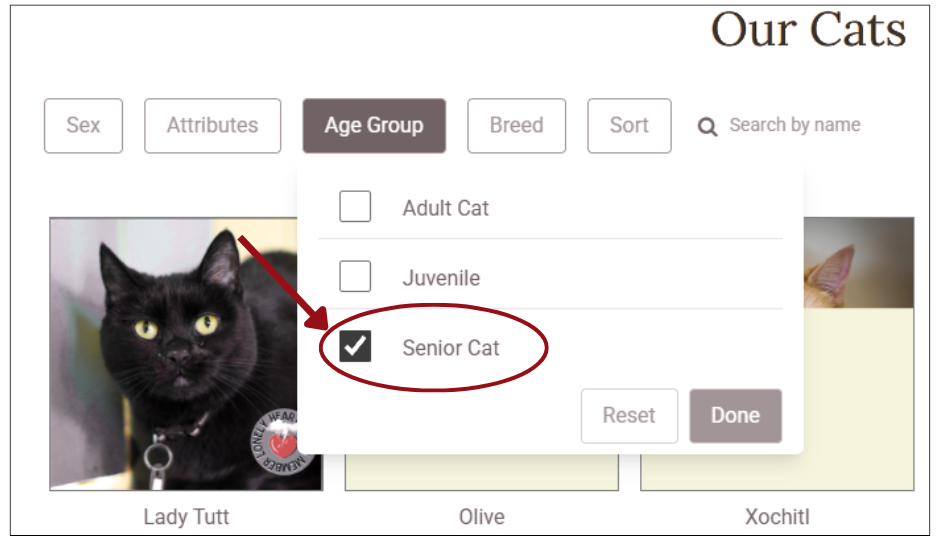
About the Author: Beth Dokolasa is a volunteer for Cat Care Society and serves on the Board of Directors. She is an instructional developer for Natural Grocers and lives in Indian Hills, Colo., with her husband, daughter, and two cats, Techno and Digit.
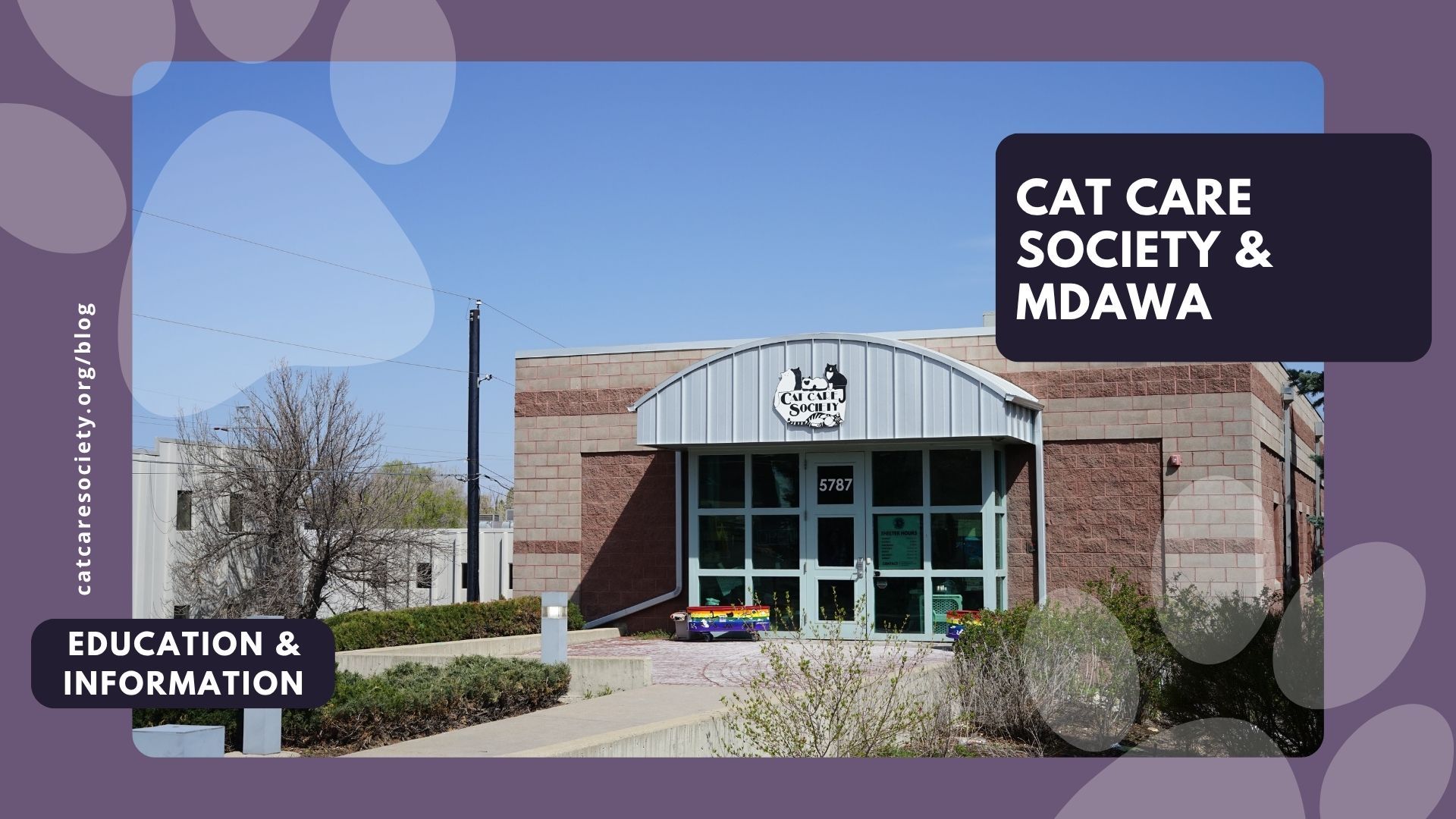
Cat Care Society is a proud member of MDAWA, the Metro Denver Animal Welfare Alliance. This coalition of 20+ local shelters, rescue groups, and animal service providers work together to promote humane care for companion animals in our community.
At Cat Care Society, collaboration with other shelters is imperative to our mission. Over half of the cats who come to our shelter are transferred from other shelters or rescues who don’t have the resources to support the needs of these special cats.
Ready to adopt a cat in need? Check out this helpful adoption guide from MDAWA (along with our answers!).
Before You Adopt a Pet: What to Know and Ask
Adopting from a Metro Denver Animal Welfare Alliance (MDAWA) Member Means Adopting with Confidence
Adopting a pet is one of the most rewarding decisions you can make—but it’s also a big commitment. Choosing the right adoption organization is just as important as finding the right animal. When you adopt from a member of the Metro Denver Animal Welfare Alliance (MDAWA), you’re supporting a network of organizations that are dedicated to ethical, compassionate, and community-focused animal welfare.
MDAWA members aren’t just placing pets—they’re committed to being your long-term partner. Here’s how they go above and beyond, and what to ask when you’re considering adoption.
They’ll Be Your Long-Term Animal Welfare Partner
MDAWA organizations understand that adoption is just the beginning of your journey with a new pet. They offer resources and support to help adopters navigate any challenges that may come up after adoption—ensuring the best outcome for both you and your pet.
They Work with You to Make the Right Match
Rather than rushing the adoption process, MDAWA members take the time to make thoughtful, informed matches. They consider your preferences, lifestyle, experience, and the specific needs of the animal to help ensure a successful, lasting connection.
They Prioritize Animal Health and Wellness
All animals adopted through MDAWA organizations receive thorough medical care before adoption. This includes vaccinations, spay or neuter surgeries, and other needed veterinary treatment. They also provide behavioral support, so pets are set up for success in their new homes.
They Help the Most Vulnerable Local Animals
MDAWA members focus on protecting the Denver Metro area’s most vulnerable animals—those who are stray, surrendered, or at risk of homelessness—rather than bringing in only easily adoptable animals from out of state.
They Work Together to End Pet Homelessness
These organizations collaborate to provide a wide range of services that benefit the community, such as lost-and-found programs, low-cost veterinary care, spay/neuter clinics, and pet food pantries. By supporting a MDAWA member, you’re also supporting efforts to reduce the number of homeless animals in your neighborhood.
When you’ve found a pet you’re interested in, it’s a good idea to ask the organization a few key questions to make sure you’re adopting from an ethical, responsible source. Here’s a checklist to guide you:
By carefully choosing where you adopt, you can ensure your new pet has been well cared for and is a good fit for your family. When you adopt from a MDAWA member, your decision not only changes a pet’s life—it also supports a network of organizations working together for ethical animal welfare across the Denver metro area.
Consider adopting your next pet from a MDAWA member.
Learn more about our mission and our members at mdawalliance.org/about
Please include your full name on a gift note when sending donations through Amazon or Chewy, so we can properly acknowledge your generous contribution! Without it, we won’t be able to identify that the items are from you. Also, please keep your shopping receipt, as it serves as your official donation receipt.
Copyright © 2024-2025 Cat Care Society. All Rights Reserved. | Privacy Policy
The Cat Care Society is a non-profit 501(c)(3) organization. Our tax identification number is 84-0869447.
Spark a chain of giving! Help us reach our goal to raise $180,000 for Colorado cats in need!
Double your impact by joining the Cat-alyst Club, our community of monthly donors, and Colorado Gives Foundation will match your first month’s donation!
Place your bids in our silent auction featuring cat-themed sculptures, paintings, pottery, and more!
Bidding will close Saturday, October 18, at approximately 7:30 PM.
The shelter will close at 3 PM today as we prepare for our Tails of the Painted Cats fundraising gala.
We apologize for any inconvenience. The shelter will reopen with normal hours on Sunday.
Upcoming events, special announcements, and cute cat photos delivered to your inbox bi-weekly!